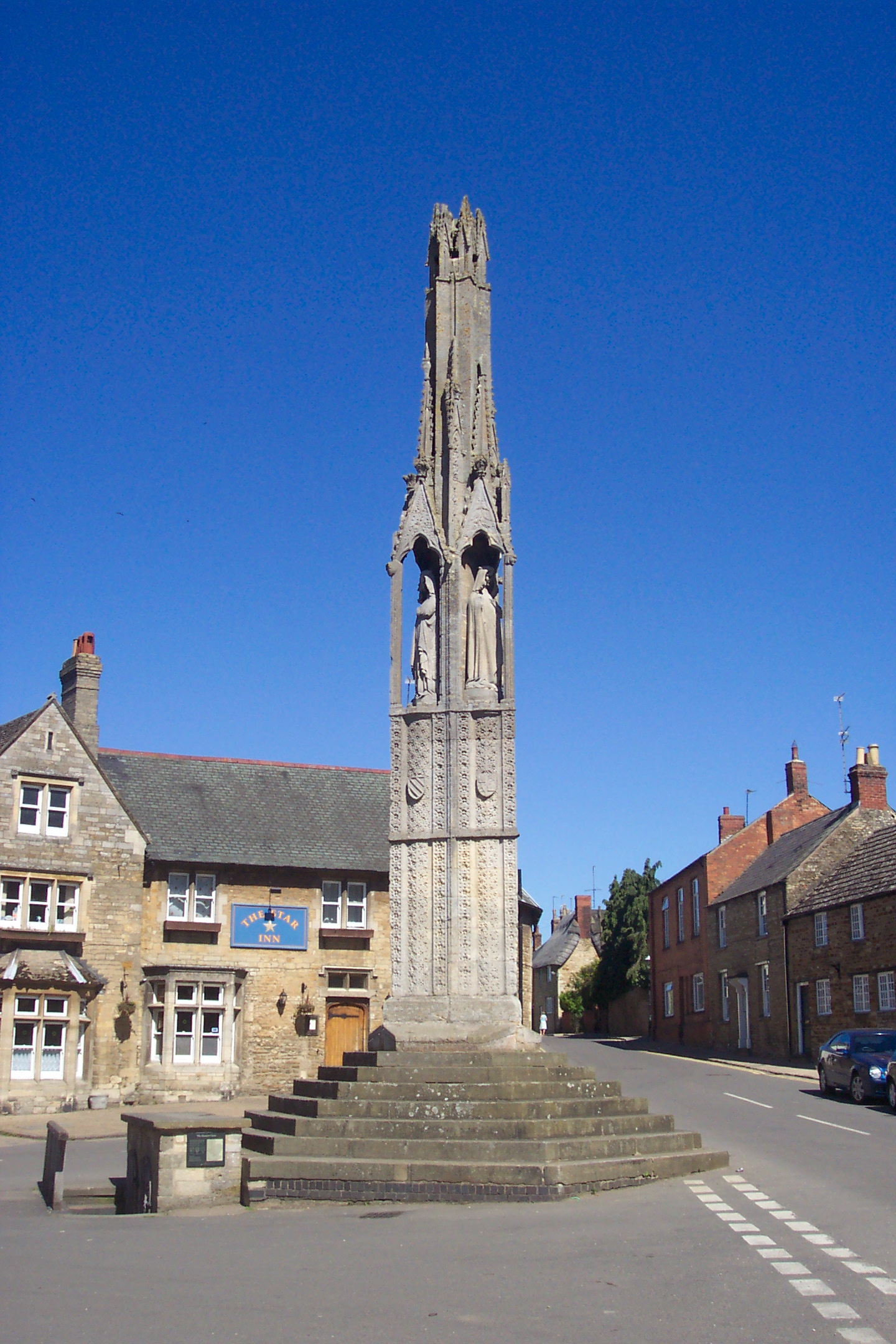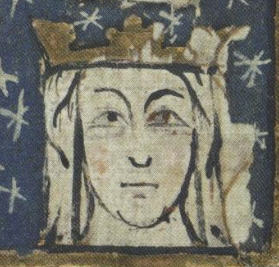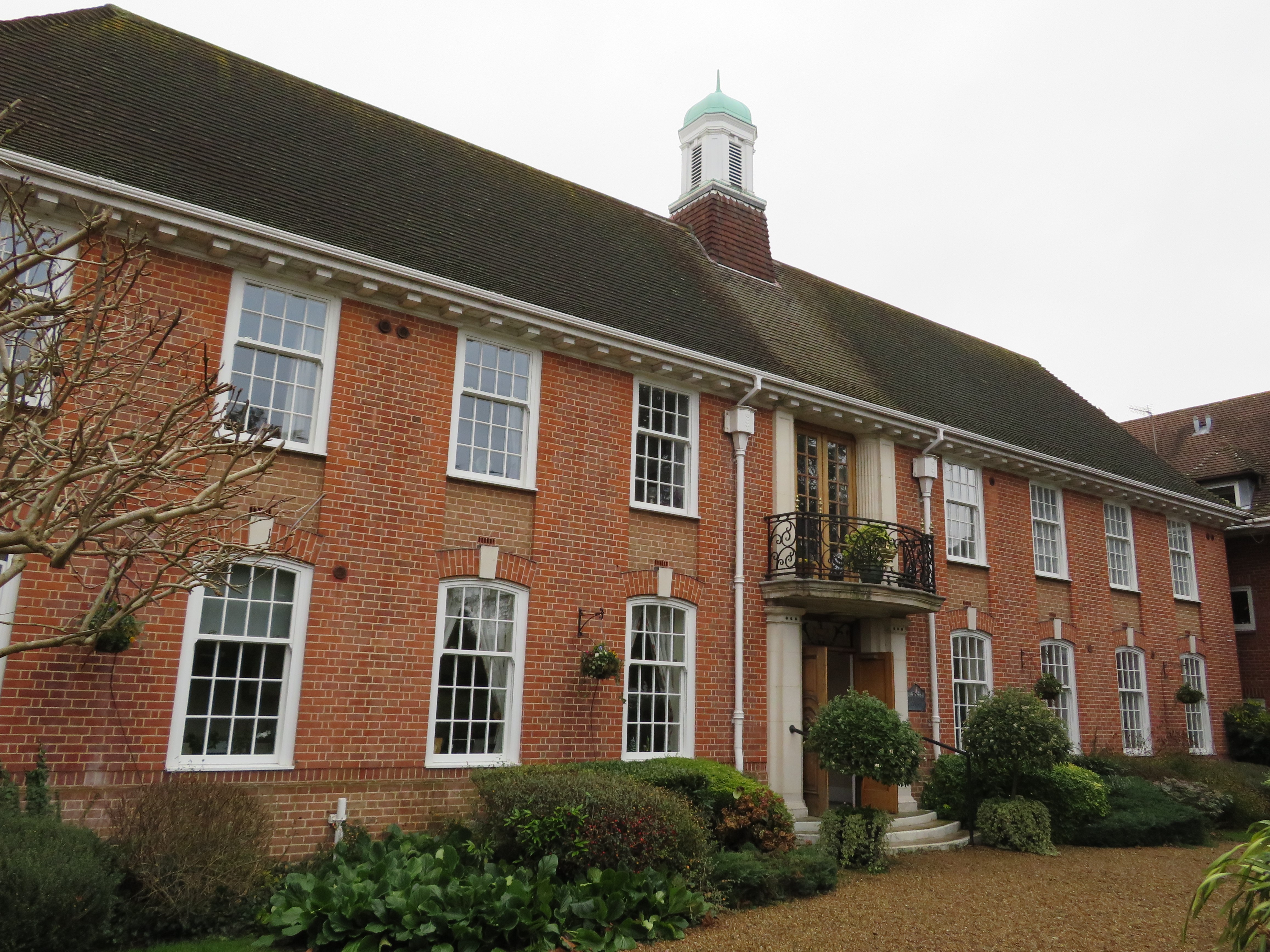|
Waltham Cross
Waltham Cross is a town in the Borough of Broxbourne, Hertfordshire, England, located north of central London. In the south-eastern corner of Hertfordshire, it borders Cheshunt to the north, Waltham Abbey to the east, and Enfield to the south, forming part of the metropolitan area of London and the Greater London Urban Area. Historically part of the ancient parish of Cheshunt in the Hertford hundred of Hertfordshire, the town once formed its southern part. Waltham Cross formed a separate ecclesiastical parish in 1855, whilst remaining part of the Cheshunt civil parish. The parish of Cheshunt was granted urban district status in 1894, and merged with that of Hoddesdon to form the Borough of Broxbourne in 1974. The town has a modest commercial centre, with a pedestrianised High Street and an indoor shopping centre. The Waltham Cross post town stretches to the neighbouring town of Cheshunt and a small part of Enfield. It is named after the Eleanor cross which stands in its cent ... [...More Info...] [...Related Items...] OR: [Wikipedia] [Google] [Baidu] |
Eleanor Cross
The Eleanor crosses were a series of twelve tall and lavishly decorated stone monuments topped with crosses erected in a line down part of the east of England. King Edward I had them built between 1291 and about 1295 in memory of his beloved wife Eleanor of Castile. The King and Queen had been married for 36 years and she stayed by the King’s side through his many travels. While on a royal progress, she died in the East Midlands in November 1290. The crosses, erected in her memory, marked the nightly resting-places along the route taken when her body was transported to Westminster Abbey near London. The crosses stood at Lincoln, Grantham and Stamford, all in Lincolnshire; Geddington and Hardingstone in Northamptonshire; Stony Stratford in Buckinghamshire; Woburn and Dunstable in Bedfordshire; St Albans and Waltham (now Waltham Cross) in Hertfordshire; Cheapside in London; and Charing (now Charing Cross) in Westminster. Three of the medieval monuments – those at ... [...More Info...] [...Related Items...] OR: [Wikipedia] [Google] [Baidu] |
Eleanor Of Castile
Eleanor of Castile (1241 – 28 November 1290) was Queen of England as the first wife of Edward I, whom she married as part of a political deal to affirm English sovereignty over Gascony. The marriage was known to be particularly close, and Eleanor travelled extensively with her husband. She was with him on the Ninth Crusade, when he was wounded at Acre, but the popular story of her saving his life by sucking out the poison has long been discredited. When she died, at Harby near Lincoln, her grieving husband famously ordered a stone cross to be erected at each stopping-place on the journey to London, ending at Charing Cross. Eleanor was better educated than most medieval queens and exerted a strong cultural influence on the nation. She was a keen patron of literature and encouraged the use of tapestries, carpets and tableware in the Spanish style, as well as innovative garden designs. She was also a successful businesswoman, endowed with her own fortune as Countess of Ponth ... [...More Info...] [...Related Items...] OR: [Wikipedia] [Google] [Baidu] |
Eleanor Cross
The Eleanor crosses were a series of twelve tall and lavishly decorated stone monuments topped with crosses erected in a line down part of the east of England. King Edward I had them built between 1291 and about 1295 in memory of his beloved wife Eleanor of Castile. The King and Queen had been married for 36 years and she stayed by the King’s side through his many travels. While on a royal progress, she died in the East Midlands in November 1290. The crosses, erected in her memory, marked the nightly resting-places along the route taken when her body was transported to Westminster Abbey near London. The crosses stood at Lincoln, Grantham and Stamford, all in Lincolnshire; Geddington and Hardingstone in Northamptonshire; Stony Stratford in Buckinghamshire; Woburn and Dunstable in Bedfordshire; St Albans and Waltham (now Waltham Cross) in Hertfordshire; Cheapside in London; and Charing (now Charing Cross) in Westminster. Three of the medieval monuments – those at ... [...More Info...] [...Related Items...] OR: [Wikipedia] [Google] [Baidu] |
Hoddesdon Urban District
Hoddesdon () is a town in the Borough of Broxbourne, Hertfordshire, lying entirely within the London Metropolitan Area and Greater London Urban Area. The area is on the River Lea and the Lee Navigation along with the New River. Hoddesdon is the second most populated town in Broxbourne with a population of 42,253 according to the United Kingdom's 2011 census. It borders Ware to the North, Nazeing in Essex to the East, and Broxbourne to the South. The Prime Meridian passes just to the east of Hoddesdon. The town is served by Rye House railway station and nearby Broxbourne railway station. History Early history The name "Hoddesdon" is believed to be derived from a Saxon or Danish personal name combined with the Old English suffix "don", meaning a down or hill. The earliest historical reference to the name is in the Domesday Book within the hundred of Hertford. Hoddesdon was situated about north of London on the main road to Cambridge and to the north. The road forked in ... [...More Info...] [...Related Items...] OR: [Wikipedia] [Google] [Baidu] |
Edward Blore
Edward Blore (13 September 1787 – 4 September 1879) was a 19th-century English landscape and architectural artist, architect and antiquary. Early career He was born in Derby, the son of the antiquarian writer Thomas Blore. Blore's background was in antiquarian draughtsmanship rather than architecture, in which he had no formal training. Nevertheless, he designed Vorontsov Palace (Alupka), a large palace for Count Vorontsov in Alupka, Crimea, and important ecclesiastical furnishings designed by him included organ cases for Winchester Cathedral and Peterborough Cathedral (the Peterborough case since removed) and the choir stalls in Westminster Abbey. Charles Locke Eastlake, writing in 1872, believed that he had been apprenticed to an engraver,Eastlake 1873, p.138 but other sources dispute this. He illustrated his father's ''History of Rutland'' (1811), and over the next few years he made the drawings of York Minster, York and Peterborough and measured drawings of Wincheste ... [...More Info...] [...Related Items...] OR: [Wikipedia] [Google] [Baidu] |
Essex
Essex () is a county in the East of England. One of the home counties, it borders Suffolk and Cambridgeshire to the north, the North Sea to the east, Hertfordshire to the west, Kent across the estuary of the River Thames to the south, and Greater London to the south and south-west. There are three cities in Essex: Southend, Colchester and Chelmsford, in order of population. For the purposes of government statistics, Essex is placed in the East of England region. There are four definitions of the extent of Essex, the widest being the ancient county. Next, the largest is the former postal county, followed by the ceremonial county, with the smallest being the administrative county—the area administered by the County Council, which excludes the two unitary authorities of Thurrock and Southend-on-Sea. The ceremonial county occupies the eastern part of what was, during the Early Middle Ages, the Anglo-Saxon Kingdom of Essex. As well as rural areas and urban areas, it forms ... [...More Info...] [...Related Items...] OR: [Wikipedia] [Google] [Baidu] |
EN Postcode Area
The EN postcode area, also known as the Enfield postcode area,Royal Mail, ''Address Management Guide'', (2004) is a group of eleven postcode districts in England, within seven post towns. These cover parts of northern Greater London (including Enfield and Barnet), southern Hertfordshire (including Potters Bar, Waltham Cross, Broxbourne and Hoddesdon) and western Essex (including Waltham Abbey). __TOC__ Postal administration Mail for this area is sorted at the Home Counties North Mail Centre in Hemel Hempstead, and is delivered from offices in Enfield (Southbury Road EN1), Barnet (Longmore Avenue EN5), Potters Bar (Darkes Lane EN6), Waltham Cross (Eleanor Cross Road EN8) and Hoddesdon (Conduit Lane EN11). The area served includes the northern parts of the London Boroughs of Enfield and Barnet, the eastern part of the Hertsmere district of Hertfordshire, the southern part of the Welwyn Hatfield district and virtually all of the borough of Broxbourne, while EN9 and small parts o ... [...More Info...] [...Related Items...] OR: [Wikipedia] [Google] [Baidu] |
Freezywater
Freezywater is a neighbourhood of the traditional broad definition of Enfield, London, Enfield in the London Borough of Enfield, north London. It has a border with Hertfordshire. It is between Bullsmoor to the west, Enfield Lock to the east, Enfield Wash to the south, and Waltham Cross, Hertfordshire to the north. It became more than a hamlet (place), hamlet at the beginning of the 20th century. Freezywater occupies a zone straddling Hertford Road from its junction with Ordnance Road in the south to Bullsmoor Lane and the M25 motorway, Holmesdale Tunnel overpass in the north. It is generally deemed to commence westwards from the West Anglia Main Line, Liverpool Street to Cheshunt railway. Etymology First recorded as ''Freezywater'' (1768) and ''Freezy Water'' (1819); the local farm choosing to name itself after its fishpond or duck pond which was liable to freeze. Local history For centuries this area was farmed principally by three farms and smallholdings, the greatest being ... [...More Info...] [...Related Items...] OR: [Wikipedia] [Google] [Baidu] |
M25 Motorway
The M25 or London Orbital Motorway is a major road encircling most of Greater London. The motorway is one of the most important roads in the UK and one of the busiest. Margaret Thatcher opened the final section in 1986, making the M25 the longest ring road in Europe upon opening. The Dartford Crossing completes the orbital route but is not classed as motorway; it is classed as a trunk road and designated as the A282. In some cases, including notable legal contexts such as the Communications Act 2003, the M25 is used as a ''de facto'' alternative boundary for Greater London. In the 1944 ''Greater London Plan'', Patrick Abercrombie proposed an orbital motorway around London. This evolved into the London Ringways project in the early 1960s, and by 1966, planning had started on two projects, London Ringways#Ringway 3, Ringway 3 to the north and London Ringways#Ringway 4, Ringway 4 to the south. By the time the first sections opened in 1975, it was decided the ringways would be com ... [...More Info...] [...Related Items...] OR: [Wikipedia] [Google] [Baidu] |
Waltham Abbey (town)
Waltham Abbey is a town and civil parish in the Epping Forest District of Essex, within the metropolitan and urban area of London, England, north-east of Charing Cross. It lies on the Greenwich Meridian, between the River Lea in the west and Epping Forest in the east, with large sections forming part of the Metropolitan Green Belt. The town borders Nazeing and Epping Upland to the north, Chingford to the south, Loughton, Theydon Bois and Buckhurst Hill to the east and south-east, and Waltham Cross, Cheshunt and Enfield to the west. Historically an ancient parish named Waltham Holy Cross in the Waltham hundred of Essex, it became a local government district in 1850, and was granted urban district status in 1894. Whilst the use of the name Waltham Abbey for the town dates back to the 16th century at the earliest, the parish itself was not renamed until 1974, when the Waltham Holy Cross Urban District was abolished and succeeded by Waltham Abbey Town Council. The town council ... [...More Info...] [...Related Items...] OR: [Wikipedia] [Google] [Baidu] |
Hardingstone
Hardingstone is a village in Northamptonshire, England. It is on the southern edge of Northampton, and now forms a suburb of the town. It is about from the town centre. The Newport Pagnell road (the B526, formerly part of the A50) separates the village from the nearby village of Wootton, which has also been absorbed into the urban area. The villages name means 'Hearding's Thorn-tree'. Governance As a village distinct from the town it has its own parish council, unlike more recent 20th and 21st century suburbs of the town. The parish includes part of the Brackmills Industrial Estate, and borders Delapré Abbey. Demographics The 2001 census showed there were 2,015 people living in the parish: 978 males and 1,037 females in 885 households. The 2011 census showed a very minor reduction to 2,014. Brackmills To the north-east of the village is the large Brackmills Industrial Estate. The estate was chosen as the site of a 400 ft wind turbine erected by the Asda supermark ... [...More Info...] [...Related Items...] OR: [Wikipedia] [Google] [Baidu] |
Geddington
Geddington is a village and civil parish on the A4300, previously A43, in North Northamptonshire between Kettering and Corby. The population of the civil parish at the 2011 census was 1,503, virtually unchanged from 1,504 at the 2001 census. The villages name means 'Farm/settlement connected Gaete' or 'farm/settlement connected with Geiti'. Alternatively, 'goat place farm/settlement'. The village contains an Eleanor cross. The monument dates from 1294, when the crosses were raised as a memorial by Edward I (1239–1307) to his late wife, Eleanor of Castile (1241–1290). There were originally 12 monuments, one in each resting place of the funeral procession as they travelled to Westminster Abbey. The Geddington cross is one of only three Eleanor crosses still standing; the other two being in Hardingstone (near Northampton) and Waltham Cross, although remnants and reconstructions of the lost ones can also be seen at other sites. The Geddington cross is regarded as the best pres ... [...More Info...] [...Related Items...] OR: [Wikipedia] [Google] [Baidu] |






